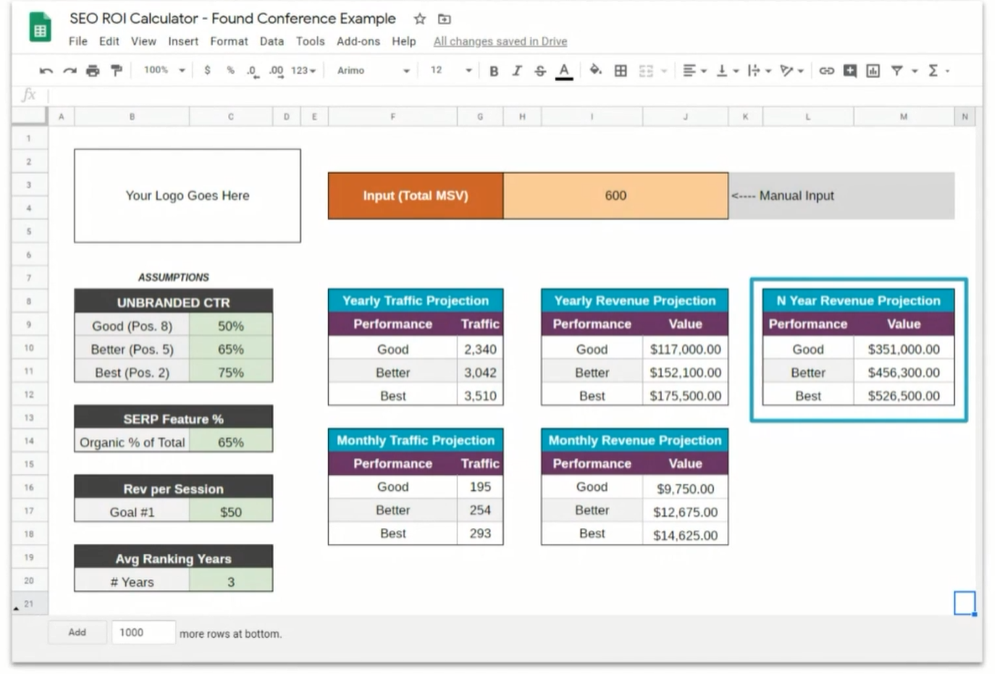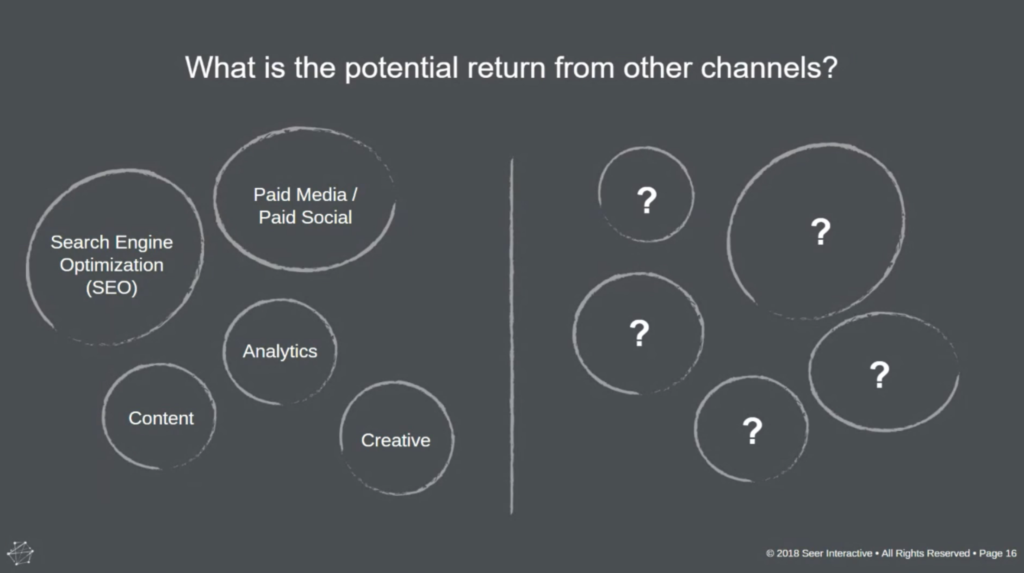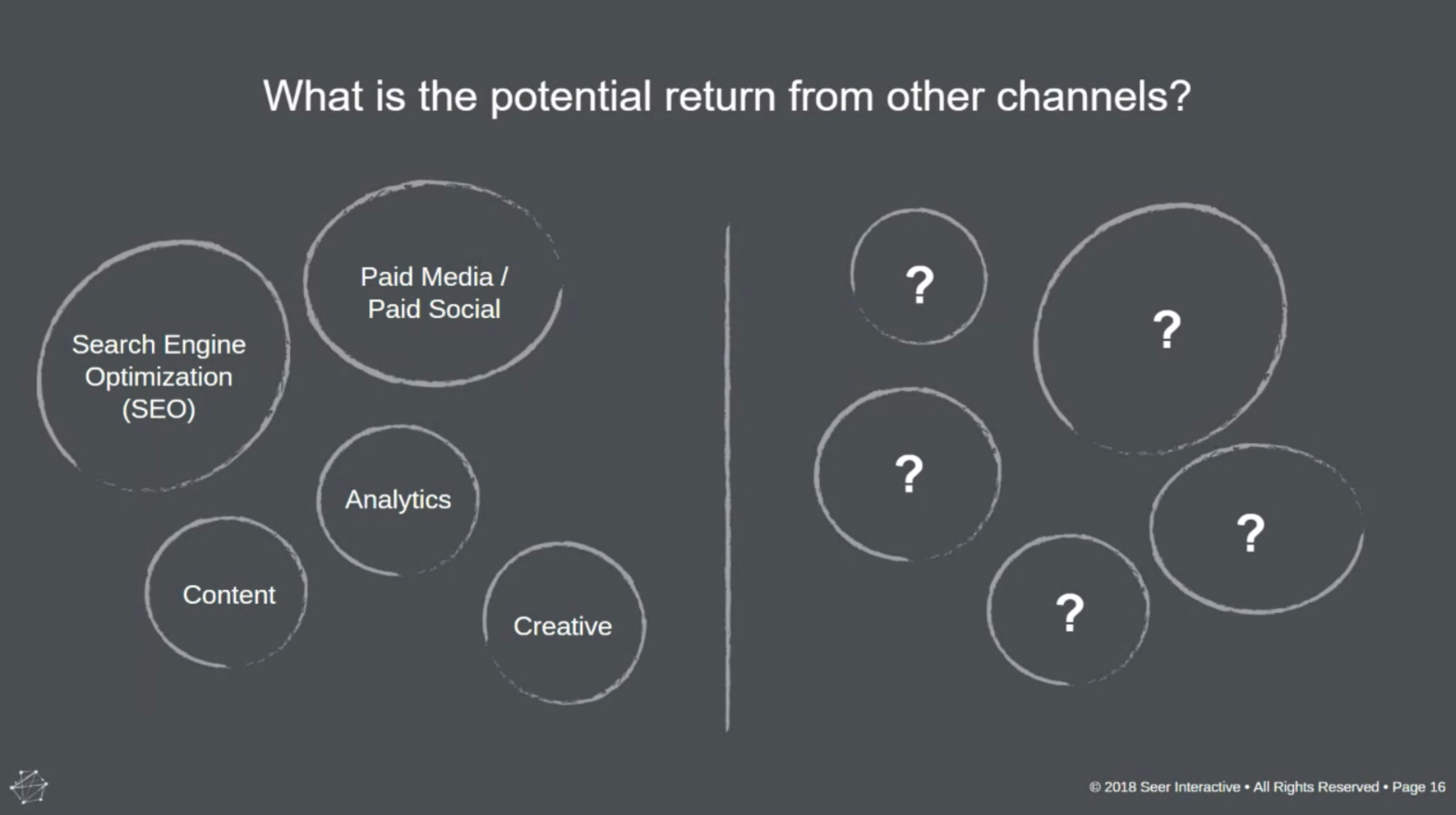Are you desperate for a better SEO budget? Are your requests for better resources falling flat? Do you have folders of rejected requests for a copywriter, SEO tracking tool, or simple piece of content? That’s, as we say in the business, highly relatable content.
In order to capture the attention of your C Suite, you need to speak their language. Tracy McDonald, a Data Strategy Manager from Seer Interactive, joined us at our first virtual Found Conference to talk about building better pitches. By examining the audience for your pitch, and the opportunities your content has, you’re more prepared to make a statement that resonates with executives.
Know your audience.
Pitching to your own boss may be a more casual affair than demoing SEO services to a potential client. But, even if you’re part of an in-house digital team, buy-in from your org’s leadership can mean financial investment in SEO programs — and a executive interest in improving collaboration between departments. You likely know the value of SEO, and have plenty of success stories to back up your faith in your own abilities. But, how does that translate to your boss, your boss’ boss, or your organization’s execs? Here are a few things to keep in mind:
1. Know their comfort level with SEO.
When presenting to high-level folks — or to staff outside of your marketing team — you may need to start with a little education. But, when you’re pitching to the head of digital marketing, you don’t want to insult their intelligence by assuming they’ve never heard of “bounce rate.” Tailor your presentation to your group’s level of understanding. If your audience isn’t regularly a part of the SEO-sphere, make sure your presentation smartly manages their expectations, and consider showing a few examples of their site’s current rank. Show where SEO can help, and also explain that their site is unlikely to skyrocket in rank for every non-branded keyword.
2: Know their perception of their own digital presence.
If you’re talking to a relatively hands-off bunch, you may need to recap previous SEO efforts and results. If you’re talking to an existing client, this is a great opportunity to bring up previous successes — or previous failures. Discuss what you plan to do similarly, or how you hope to change course. If you’re talking to the C Suite, keep your language high-level: highlight the connection to down-funnel customers who are already searching and ready to convert. If you’re talking to other SEOs, feel free to show why your proposed SEO activities place your org nearer the cutting edge. In either situation, focus on conversions.
3. Know their favorite conversion.
In order to demonstrate an initiative’s potential success, you need to know what success means to your audience. If you’re only optimizing for traffic, you may be speaking a totally different language than your execs. Tracy says she has been there: she once suggested optimizing the hell out of a product page, then learned that the product actually had a negative profit margin. She pitched optimizing for organic traffic, but her client wanted to optimize for profit. Your client or executive team may not know what conversion they want to dial in on, and that conversation may need to happen before you can give a killer presentation. Discuss how each KPI tracks back to your organization’s larger goals, and make sure you’re on the same page.
Use your words — but lean on your data.
No matter how well you know your audience, you need to be prepared to be peppered with questions. Of course, you also need to be prepared for that Friday-afternoon goldfish stare that office presentations sometimes create. The best way to keep your decision-makers engaged? Refer to cold, hard numbers. That means talking returns.
Tracy suggests using your own data to build a revenue return calculator. Building an ROI calculator for a piece of content can seem daunting — but, you likely have everything (or nearly everything) that you need — and we’ve got the details right here. This process requires Google Sheets or Excel, along with four pieces of data that you already have. You can build the calculator to math out the expected return, plugging in your click-through rate, the organic percentage you can expect to see on a search engine results page, your own per-session revenue, and an estimated ranking duration.

CEOs and CIOs love data — so make sure that they know how you’ll keep providing it. Your role as a marketing analyst doesn’t end when a higher-up agrees to an SEO plan. Having an ROI calculator, as well as a backlog of other KPIs, shows that you know how to measure success. Demonstrate that the Set possible benchmarks, and include a timeline for assessment of your SEO initiatives.
The beauty of an ROI calculator lies in the ability to insert new values when questioned on your variables. How will your ROI look if you see a huge drop in per-session revenue, or Google suddenly stakes a huge piece of your best SERP for its own Knowledge Panel content? Talk in terms of dollars, and keep your buts and what-ifs in line. What will you do if you don’t hit the expected ROI? Show a few methods to change course if revenue ranks, and demonstrate your willingness to stay on top of measuring KPIs.
Demonstrate value outside of the SEO silo.
When you’re pitching a new piece of content, you need to think outside organic box: both in terms of cost and return. Consider paid media, social media, traditional media, and any other department and channel involved in your content creation and output process.
Your executive team will want to know the total cost of creating a piece of content: Consider the cost of production, writing, any equipment or software needed. It’s simple to say “we can do this all in-house,” but the decision may not seem simply to your SEO. Why should you dedicate staff hours to this piece of content — or to producing content at all? If your ROI calculation assumes zero cost, you may want to rethink that assumption.
You’ll also want to consider the potential return for the other channels. If you build a piece of content, can you promote it on paid ads and social? If you build a piece of content that never ranks — and never brings you any organic revenue! — can you still use that content to drive traffic through PPC ads and lead-gen pages? Does that content support themes found in a larger campaign? How does it fit into your brand-building? Make sure to address these questions — because the person you’re pitching to will be thinking of them.

Remember why you’re in front of management
If you’re speaking to management about SEO investments, you’re likely there to help that group prioritize SEO strategies. Remember that content is a tangible asset with measurable goals: and talk about it as such. When your pitch is data-driven and you tie inputs to results, you’re speaking the language of the C-Suite.
Need help with your next SEO project? Schedule a discovery call now or fill out this form and find out how Demandsphere can work for you.

